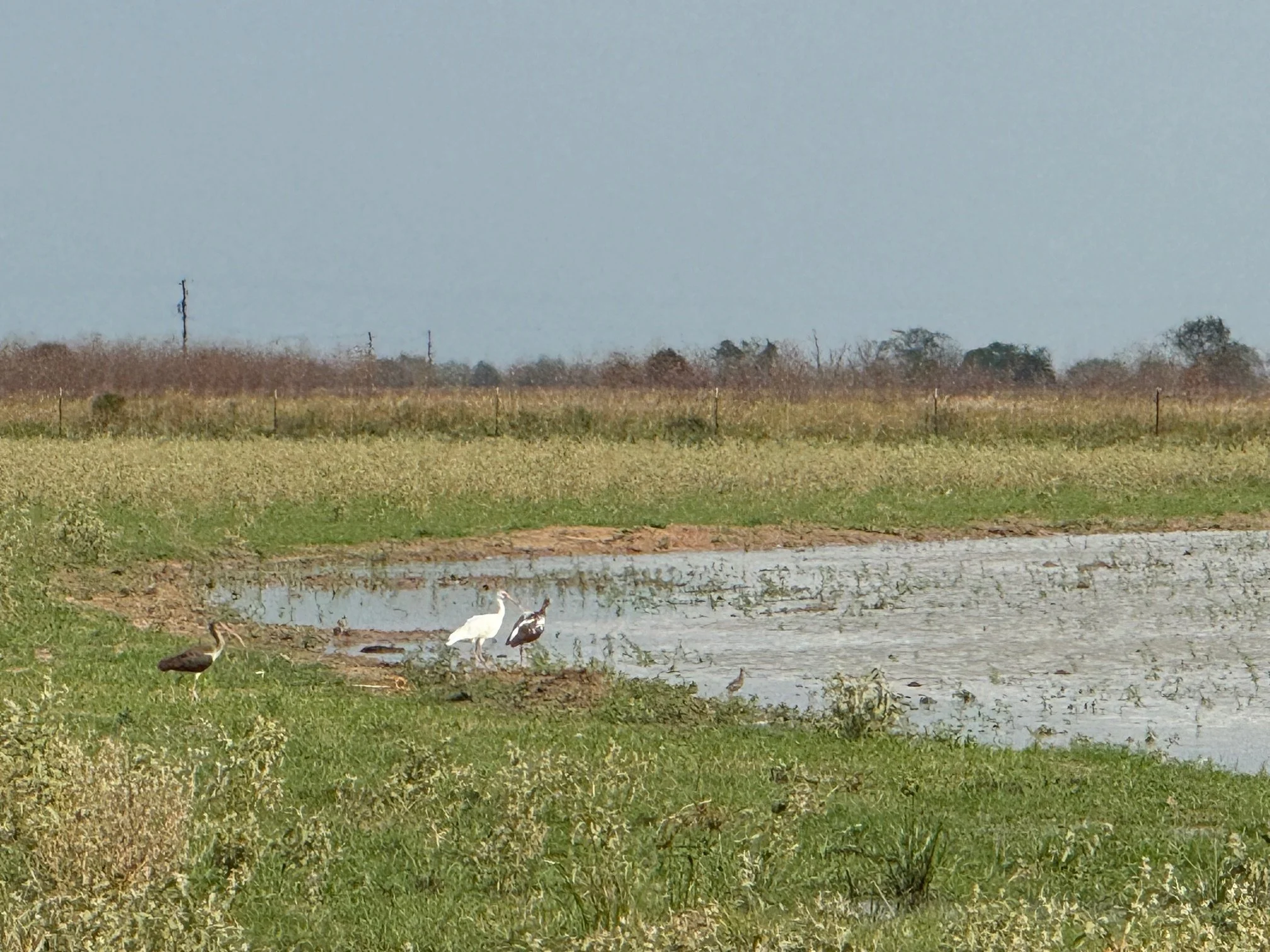The Sanctuary
Conserving natural lands as your lasting legacy.
The Blazing Star Sanctuary is a conservation cemetery, set aside for green burials while also being managed as a nature sanctuary. This beautiful, natural area is preserved forever in honor of those who are laid to rest within its grounds.
Creating a Place of Remembrance
The sanctuary is currently in the middle of being restored to a native prairie habitat, which will include native wildflowers, grasses, and trees. We welcome you to follow along on our interactive Chronolog page as we restore the prairie. Natural surface paths meander through the cemetery’s grasslands. There are currently no facilities at the Blazing Star Prairie, although tents and chairs are available graveside as part of opening and closing services (see current opening and closing price list). Use of the nearby Indiangrass Preserve Welcome Center for Memorial Gatherings is permissible with prior agreement of the Coastal Prairie Conservancy, subject to availability. It is understood that the Welcome Center is the hub of the Katy Prairie Preserve Stewardship Program and hosts regular volunteer and outreach programs. Donations are appreciated.
Burial plots are widely spaced, with graves located in deference to the ecological features of the land. Small, in-ground grave markers are used, allowing for the prairie to remain open and natural. Visitors are able to easily locate a burial site through our interactive preserve map and perpetual memorial pages.
Green Burials
All burials in the conservation cemetery are prepared in accordance with the Green Burial Council natural methods for body preparation and interment, allowing all who are laid to rest to be surrounded by life as they return peacefully to the earth.
Cremated remains may also be interred at the sanctuary.
Benefits
The Nature’s Burial grounds provide vital services for both people and the planet. These include:
the conservation of biodiversity;
the creation of wild and beautiful open lands;
carbon sequestration and improved air quality;
improved water quality through natural filtration;
flood mitigation benefits through lands that absorb, slow down, and store stormwater;
an opportunity to appreciate nature among all who visit the sanctuary.
The Coastal Prairie: an imperiled ecosystem
Today, the tallgrass prairie is the most endangered ecosystem in the world. It is estimated that less than 1% of the original 20 million acres of tallgrass prairie within Texas remains, with another 15 to 20% in a degraded but restorable state. These ranges apply to the Katy Prairie as well.
The Gulf Coast of Texas was once covered by unending swaths of prairies and marshes extending out to the Gulf of Mexico. When European settlers began arriving in the 1820s, over 90% of the state was rangeland. These lands were productive for agriculture and then ripe for industrial and urban development as populations grew.
The Greater Houston region is no exception to this evolution. Our relatively young city has experienced rapid change and growth, resulting in the conversion of prairies, farms, and fields into strip malls, offices, parking lots, and proliferating suburbs, consuming thousands of acres of the coastal prairie.
The Nature’s Burial conservation cemetery grounds is currently being restored to mimic the coastal prairie ecosystem that once covered these lands.
Follow along as we restore the coastal prairie and wetland habitats at Blazing Star Prairie!
In an effort to safeguard this important ecosystem, the Coastal Prairie Conservancy works toward four primary goals:
increasing protected coastal prairie lands;
restoring and enhancing conserved lands;
collaborating with other organizations to ensure a vibrant and resilient community;
connecting the public with nature through public access, educational programming, and outreach.
Nature’s Burial is now a vital part of our mission across all four of these goals.
The land that is protected as the Blazing Star Sanctuary was once virgin prairie. For the last several hundred years, it has been used by several generations of Texans for cattle grazing and crop production. Nonnative forage grasses and crops came to dominate the landscape. Natural fires and nutrient cycles were suppressed. Native wildlife species disappeared. Today, we are bringing this prairie ecosystem back to life. The cover crops are enriching the soil. The wetlands are providing valuable fresh water habitat. Wildlife are reappearing. Native plants and their pollinators are returning.
The grounds provide a publicly-accessible nature preserve as well as flood protection for our growing community.
Restoration of this rare and resilient ecosystem began in the Spring of 2024. Native grasses and wildflowers will be reestablished on the grounds in the Fall of 2025. These restored acres will support unparalleled plant diversity and will provide vital nesting and stopover habitat for migratory birds. Follow along on our interactive Chronolog page as we restore the prairie. You can also visit our page on Birding Hotspots for more information on birding in the area.
The work we embark on is a grassroots effort in the truest sense of the term. Seventy-five to eighty percent of the biomass in a prairie exists underground. This work will take time.
We look forward to hosting community planting events in the memorial grasslands that will define the cemetery. Families are welcome to participate, inviting life to return and surround their loved one’s place of rest.











